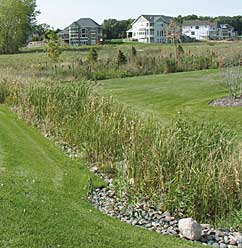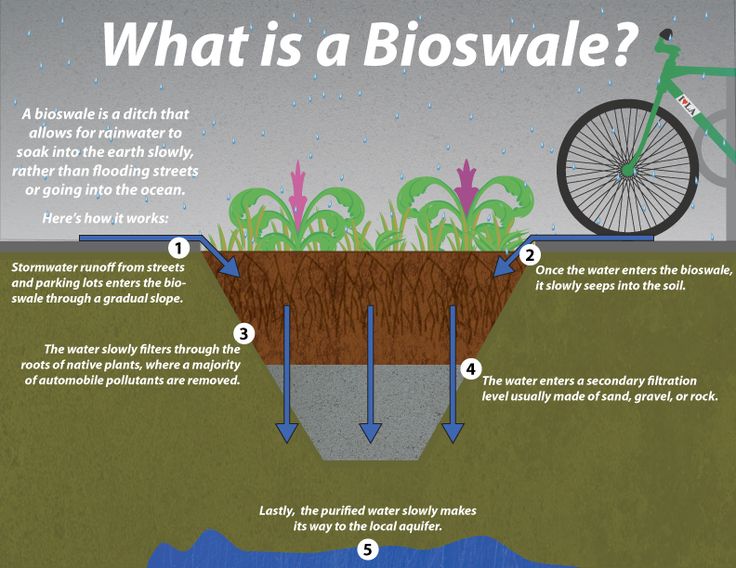How We Can Better Plan Our Cities to Utilize Stormwater
We are finally learning that stormwater can be an asset to communities but now we need to make some urban planning and engineering changes to take advantage of it
by Rinaldo Veseliza
Our urban areas have lost their ability to naturally recycle stormwater due to the impervious nature of infrastructure engineering over the past 100 years. We have been building roadways and streets to capture the runoff and send it somewhere else, usually to the river or ocean. For decades in California, controlling stormwater was the main goal but today, with more water scarcity, we are beginning to see this same water more as an asset and less as a liability.
One way of better using stormwater is by refilling underground aquifers that have been depleted by overpumping. Recycling of all captured waters would then reduce pollution of our creeks, rivers, bays and oceans. Therefore we need to revisit current policies and practices and change the popular mindset to manage water effectively and redirect water into the proper channels, starting with a simple solution to retrofit our streets with permeable surfaces to change the dynamics of water management.
Our cities and counties need to reengineer our water collection systems to release as much water as possible into the ground locally before it gets into the storm drains so the earth beneath us can recycle most of the water, reducing the amount of mercury and PCBs released into waterways. The remaining water should be captured and processed in the way sewage is, before reuse or release into the environment. Both simple and complex solutions are available and several have been incorporated in new projects.
In the 1950s, the U.S. Army Corps of Engineers (USACE) built large stormwater pipelines and basins/aqueducts, like the Los Angeles River basin, to move the water quickly away from the newly built communities and directly to bays and oceans. After years of learning about the value of this precious commodity, water, and the damage this solution causes the environment, plus subsequent legal issues and public pressure, USACE has redesigned the L.A. River and restored sections to more natural conditions so water can percolate naturally into the groundwater basin. This allows the sandy soil to filter the chemicals while helping to replenish the underground aquifers.
The 18–24 inch strip at the curb could be replaced with pavers or pervious concrete that could significantly reduce stormwater drainage problems by allowing polluted water to be filtered by natural soils and help refill the underground aquifers.
Many large coastal cities have serious pollution problems after each rainfall, where stormwater carries more dangerous pollutants than raw sewage due to the presence of oils, trash, feces and chemicals on streets and sidewalks. The pollution is washed directly into the bay and ocean without any filtration. To make matters worse, broken sewers and faulty septic systems can add significant numbers of pollutants, resulting in added stress on our rivers and waterways.
If we could reengineer our streets to absorb the stormwater locally so it could percolate and purify locally, we would reduce the amount of water polluting our waterways, beaches, lakes and streams. Removing impervious surfaces and replacing with pervious surfaces would be ideal but is costly and disruptive to urban life and traffic. Removing some portions of roadway would be less expensive and can be better managed.
More specific solutions include:
Bioswales: Most new projects require landscape (“green street”) designs that take advantage of natural drainage into bioswales, which allow water to be treated slowly and absorbed into the soil, filtering pollutants along the way. Large pools, reservoirs and lakes can be used for stormwater storage. However, they must be tested or separated from public access to prevent illness and disease. It’s imperative they be planted with trees and vegetation, which filter out pollutants through the process of phytoremediation.
Pervious concrete or pavers: Many new roadway and driveway surfaces can be designed with pervious concrete and a variety of pavers, which allow water to penetrate below the pavement. One simple solution is to replace the 18–24 inch concrete slabs against the curb with a permeable concrete or pervious concrete tiles. The work can be implemented immediately on urban roadways without major interruption to traffic and can be given to smaller contractors, providing thousands of construction jobs.
Stormwater treatment: The Santa Monica Urban Runoff Recycling Facility (SMURRF) was built in 2001, the first stormwater treatment plant in the country. It processes 500,000 gallons (1.9 million liters) per day using modular systems and recycles the water throughout the community, including schools, office buildings and municipal facilities. The plant is fully automated and requires minimal maintenance and management. Similar modular plants can be located wherever larger volumes of polluted water flow into main streams. All the water processed can be recycled locally.
Rinaldo Veseliza is an architect and director of sustainability for Alisto Engineering Group in Walnut Creek and L.A. He works on urban redevelopment, with a passion for sustainable communities, renewable energy and cleaning up water pollution. He has been directly involved in preventing water pollution since 1998 when he managed construction for the Water Garden, a self-contained office complex that recycles 80 percent of its wastewater through onsite treatment plants.
Adapted from Water Deeply.






